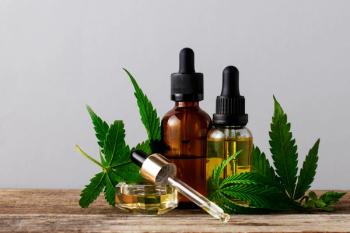Key Points
- Researchers at the University of British Columbia measured emissions of 22 terpenes from indoor cannabis facilities using gas chromatography coupled with flame ionization detection (GC-FID) and found large variability in emission rates (up to 1500%) depending on activity and lighting, with peak emissions during bud extraction (trimming).
- Dispersion modeling of β-myrcene, a key cannabis terpene, showed that even average emissions can exceed odor thresholds in many scenarios, highlighting the potential for significant odor episodes and secondary air pollution.
- Due to facility-specific factors such as emission controls, strain types, and environmental conditions, researchers caution against broad generalizations of their data and emphasize the need for robust environmental policies tailored to evolving industry practices.
Researchers at the University of British Columbia (Vancouver, Canada) aimed to quantify terpene emissions from indoor cannabis operations in the Lower Fraser Valley, British Columbia, Canada—a region already affected by odorous sources and peak ozone concentrations in the summer due to imbalance of volatile organic compounds (VOC) and nitrogen oxides (NOx) emissions. An automated gas chromatography coupled with flame ionization detection (GC-FID) sampling and processing protocol was established to measure concentrations of 22 key cannabis terpenes in eight rooms of an indoor cultivation facility and six rooms of a processing and extraction facility. A paper based on their research was published in Environmental Science: Processes & Impacts (1).
Terpenes are naturally occurring chemical compounds found in plants and some animals. These compounds are responsible for the aromas, flavors, and even colors associated with various types of vegetation. These compounds are what make certain cannabis plants smell or taste differently from others and may work with the plant’s cannabinoids and other compounds to produce medicinal effects (2).
As new jurisdictions legalize cannabis use and commercialization for medical and recreational purposes (3), interest has increased among researchers and regulators about potential occupational and environmental impacts of the increased number and size of cannabis production facilities (4), such as greenhouse gases emissions (5), land cover change and resources use (6), the depletion of natural systems (7), and quality of the air (8).
The Lower Fraser Valley comprises the districts of Metro Vancouver and the southwestern portion of the Fraser Valley Regional District. Prospective participating facilities were asked to complete a questionnaire addressing their cultivation practices, facility management, and air emissions control technologies. Two facilities (named CCF for Cannabis Cultivation Facility and CPF for Cannabis Processing Facility) were selected for this study, based on their market influence, type of operation, and their capacity to participate in logistical planning for sampling. Concentrations of 22 terpenes for eight rooms of the CCF and six rooms of the CPF were measured using gas chromatography coupled with flame ionization detection (GC-FID) (1).
Emission rates were found to vary widely, ranging from 1.05 × 10−3 to 3.09 × 10−1 kg h−1, with the highest emissions occurring during extraction of the cannabis buds (also referred to as trimming). The researchers observed substantial temporal variability; individual terpene concentrations fluctuated by up to 1500% depending on activity type and lighting conditions. Pearson correlation analysis revealed non-linear relationships between the individual terpenes and total emissions, which the researchers believe suggests shifts in chemical composition during peak emissions. For the assessment of odor implications, screening dispersion modeling for β-myrcene, a terpene considered a tracer of cannabis emissions, was conducted. Of the 7560 dispersion scenarios evaluated, 88 exceeded the odor threshold under average emissions, increasing to 241 scenarios during peak trimming emissions (1).
Because emission rates and chemical compositions vary significantly depending on activity type and conditions, and dispersion modeling results showed that average conditions are sufficient to cause odor episodes, the researchers stress the importance of characterizing both the temporal and chemical profiles of terpene emissions in cannabis facilities to avoid misestimating air pollution and odor impact. Given the growing industry and the potential for odor complaints and secondary air pollution, they believe it is crucial to understand these emissions in detail (1).
However, the researchers do admit to limitations regarding this study. In their efforts to extrapolate terpene emission rates to multiple facilities, there remains the limitation that facilities have different operating conditions; some emission controls were in place at the facilities they tested which may not be in emerging or small facilities. While regulations are still at the early stages, some facilities are already adopting Best Environmental Practices (BEP) and Best Available Technologies (BAT) and others are not. Furthermore, each strain cultivated in a facility has its own odor potential. Therefore, each facility has its own potential impact depending on what is cultivated, meteorology near site, and receptor distance. Lastly, the industry is evolving according to the market needs and strains cultivated and processed in one year might not be the same in the next. All these points must be taken into consideration when using our results. Despite these limitations, the researchers hope that policymakers, scientists, and industry stakeholders will use their findings as they develop better mitigation strategies and inform environmental regulations (1).
References
- de Ferreyro Monticelli, D.; Pham, C.; Bhandari, S. et al. Following the Smell: Terpene Emission Profiles Through the Cannabis Life-Cycle. Environ. Sci. Process. Impacts 2025.DOI: 10.1039/d5em00253b
- What are Terepenes and What Do They Do? Healthline website.https://www.healthline.com/health/cannabis-terpenes (accessed 2025-06-18)
- 3. Leafwell Team, Countries Where Weed is Legal. Leafwell Team website. https://leafwell.com/blog/countries-where-weed-is-legal (accessed 2024-10-28)
- Ashworth, K.; Vizuete, W. High Time to Assess the Environmental Impacts of Cannabis Cultivation. Environ. Sci. Technol. 2017, 51 (5), 2531-2533. DOI: 10.1021/acs.est.6b06343
- Summers, H. M.; Sproul, E.; Quinn, J. C. The Greenhouse Gas Emissions of Indoor Cannabis Production in the United States. Nat. Sustain. 2021, 4, 644–650 (2021). DOI: 10.1038/s41893-021-00691-w
- 6. Wartenberg, A. C.; Holden, P. A.; Bodwitch, H. et al. Cannabis and the Environment: What Science Tells Us and What We Still Need to Know, Environ. Sci. Technol. Lett. 2021, 8, 98–107. DOI: 10.1016/j.resconrec.2024.107737
- Desaulniers Brousseau, V.; Goldstein, B. P.; Lachapelle, M. et al. Greener Green: The Environmental Impacts of the Canadian Cannabis Industry, Resour. Conserv. Recycl. 2024, 208, 107737. DOI: 10.1016/j.resconrec.2024.107737
- Wyse, J.; Luria, G. Trends in Intellectual Property Rights Protection for Medical Cannabis and Related Products. J. Cannabis Res. 2021, 3 (1), 1. DOI: 10.1186/s42238-020-00057-7





